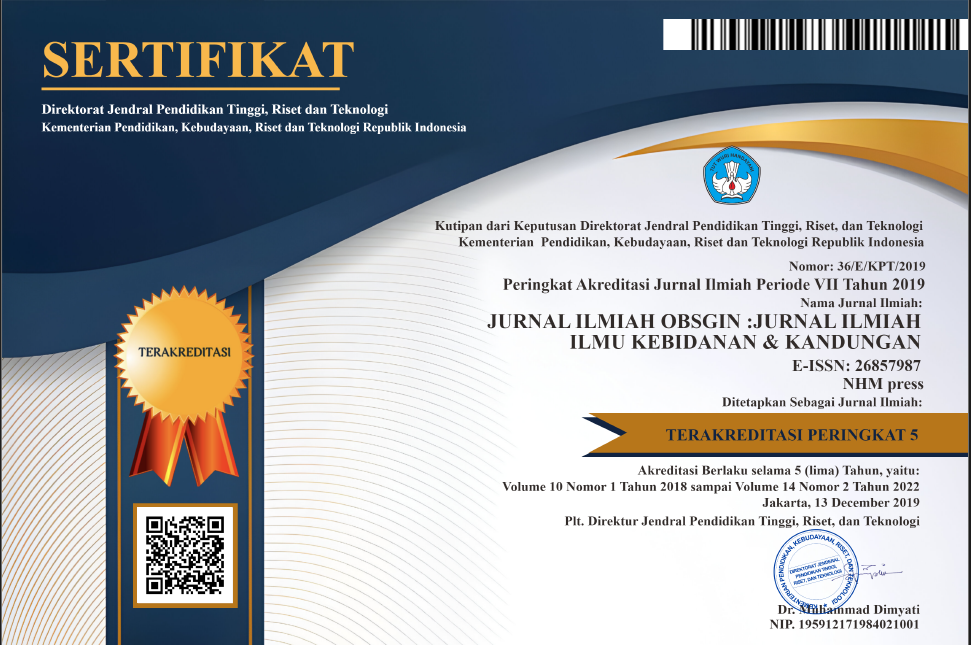Kajian pembuatan snack bar Tepung pisang (musa sapientum) dan kacang merah (phaseolus vulgaris l.) Sebagai alternatif selingan rendah indeks glikemik bagi penderita diabetes melitus tipe II
Abstract
Diabetes mellitus (DM) is one of the most common chronic diseases faced by people around the world. In patients with diabetes mellitus, blood glycose levels increase due to a deficiency of the hormone insulin. Blood sugar levels can be controlled by food intake. In this study, a processed product was made in the form of a snack bar that is suitable for consumption by people with DM as one of the choices of snack food. The snack bar is made from banana flour which has a high fiber content, and red beans which have a low glycemic index (GI) value.
The purpose of this study was to determine the characteristics of banana and red bean flour snack bars with natural sweeteners for patients with type II diabetes mellitus.This study used an experimental method with one repetition. Observations consisted of four formulations of banana flour: red bean ratio including F1 (100.0), F2 (90:10), F3 (80:20), (70:30). The parameters studied in this study were orgonoleptic test using hedonic test (color, aroma, taste, and overall acceptance of the product).
The snack bar made from banana flour and red beans that is most preferred with the highest overall acceptance likert scale value is F4, which has a ratio of 70% banana flour and 30% red beans The price of the snack bar per portion weighing 30 grams is Rp 4,500 It contains 187 kcal of energy, 596 grams of protein, 485 grams of fat, 3163 grams of carbohydrates, and 314 grams of fiber.
In further research, it is necessary to conduct a proximate test to determine the nutritional content of snack bars made from banana flour and red beans specifically. And to increase fiber content in snack bar products can be done by adding ingredients that are rich in fiber, such as oatmeal, nuts, and seeds.
References
2. Karuniati M, Ekawatiningsih P. Pemanfaatan Kacang Merah Dalam Pembuatan Redbeans Galantine. Pros Pendidik Tek Boga Busana. 2018;13(1):1–5.
3. Nairfana I, Fadilah Q. Optimasi Proses Pembuatan Tepung Pisang Termodifikasi terhadap Kadar Pati Resisten, Nilai Indeks Glikemik, dan Total Kalori Snack Bar. Biosci J Ilm Biol. 2022;10(2):1138.
4. Azmi FA, Darawati M, Wirawanan S, Widiada IGN, Adiyasa IN. Pengaruh Penambahan Tepung Kacang Merah Remaja Kek. J Gizi Prima (Frime Nutr Journal). 2021;6(September):146–54.
5. Yanti S. Pengaruh Penambahan Tepung Kacang hijau terhadap karakteristik bolu Kukus berbahan dasar tepung ubi kayu (Manihot esculenta). J TAMBORA. 2019;3(3):1–10.
6. Istifada DS, Swastawati F, Wijayanti I. The Addition of Anchovy (Stolephorus insularis) Powder to Chemical and Texture Characteristics of Pizza Base. J Pengolah Has Perikan Indones. 2023;26(2):229–40.
7. Manganti M, Mandey L, Oessoe Y. Pemanfaatan Tepung Sagu (Metroxylon sp.) dan Kacang Hijau (Glycine max Merr.) dalam Pembuatan Food Bars. J Food Reserch. 2021;1(1):44–54.
8. Zaddana C, Almasyhuri A, Nurmala S, Oktaviyanti T. Snack Bar Berbahan Dasar Ubi Ungu dan Kacang Merah sebagai Alternatif Selingan Penderita Diabetes Mellitus. Amerta Nutr. 2021;5(3):260.
9. Fitriana DN, Ekasari A, Fahira L, Afiera E. Pembuatan Snack Bar Tepung Kacang Merah (Phaseolus Vulgaris L.) Dan Kacang Tanah (Arachis Hypogaea L) Sebagai Alternatif Camilan Pelancar Asi. J Mitra Kesehat. 2022;5(1):71–7.
10. Armaya RP, Lubis LM, Nurminah M. The Effect of the Amount of Stevia Leaf Powder (Stevia rebaudiana) and Drying Time on the Quality of Snake Fruit Padang Sidempuan Dried Candied. Indones J Agric Res. 2024;7(1):38–51.
11. Febry AB, Ntau LA, Bami M. Nutritional Value of Mackerel Fish Flour (Rastrelliger Sp.) Wet Noodles Fortified with Vegetable Flour. Media Gizi Indones. 2023;18(2SP):19–26.
12. Hidayah N, Nugraheni M. Pembuatan snack bar millet sebagai alternatif cemilan kaya serat. Pros Pendidik Tek Boga Busana 14. 2019;14(1).
13. Kementerian Kesehatan RI. Pedoman Penatalaksanaan DM type 2 Dewasa. 2020;21(1):1–9.
14. BPOM. Pengawasan klaim pada label dan iklan pangan olahan. Bpom Ri. 2016;(13):1–54.
15. Sunita A. Prinsip Dasar Ilmu Gizi [Internet]. Media Sains Indonesia. 2022. p. 1–239. Available from: https://revistas.ufrj.br/index.php/rce/article/download/1659/1508%0Ahttp://hipatiapress.com/hpjournals/index.php/qre/article/view/1348%5Cnhttp://www.tandfonline.com/doi/abs/10.1080/09500799708666915%5Cnhttps://mckinseyonsociety.com/downloads/reports/Educa
16. Kementerian Kesehatan RI. Tabel Komposisi Pangan Indonesia 2017. Vol. 2, Kemenkes RI. 2018. 28 p.
17. Kementerian Kesehatan RI. Angka Kecukupan Gizi (AKG) indonesia. 2019;1–19.











